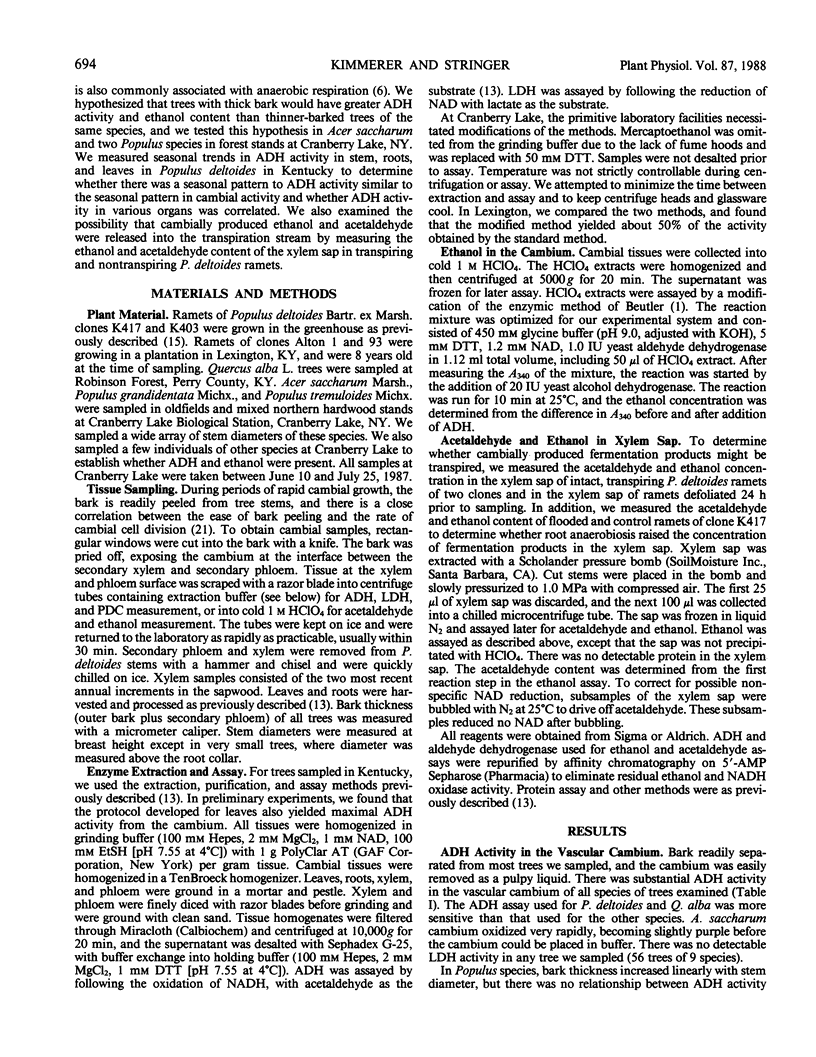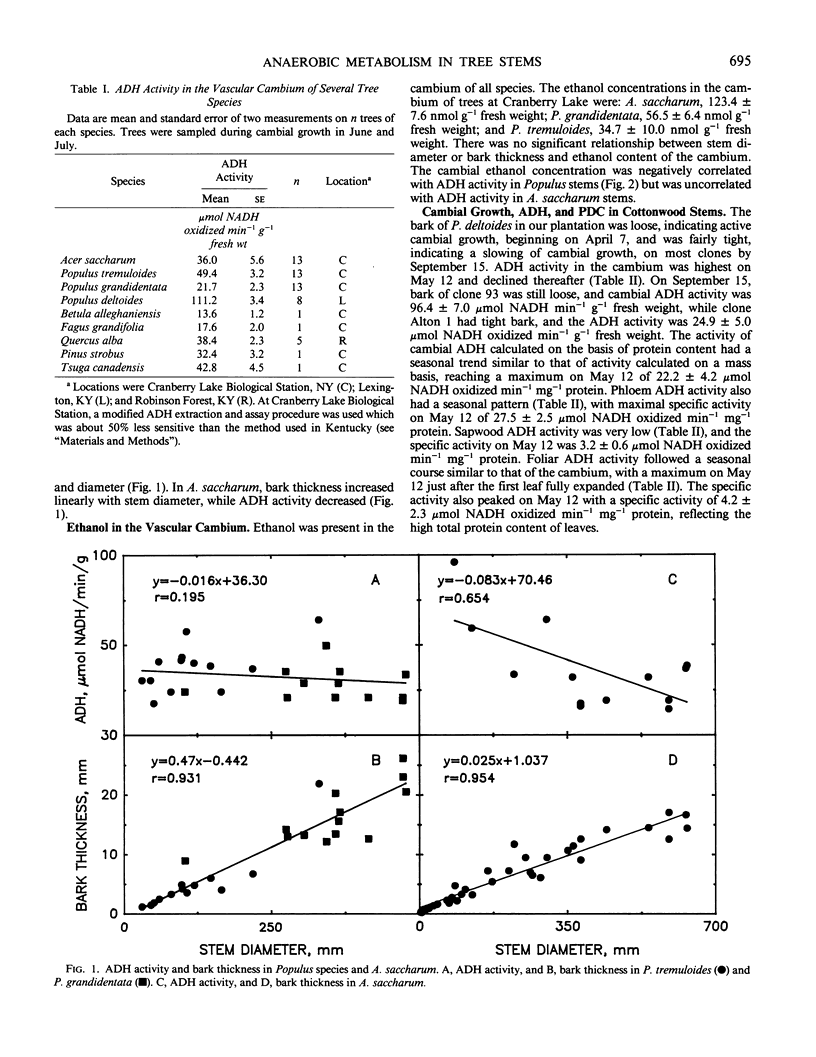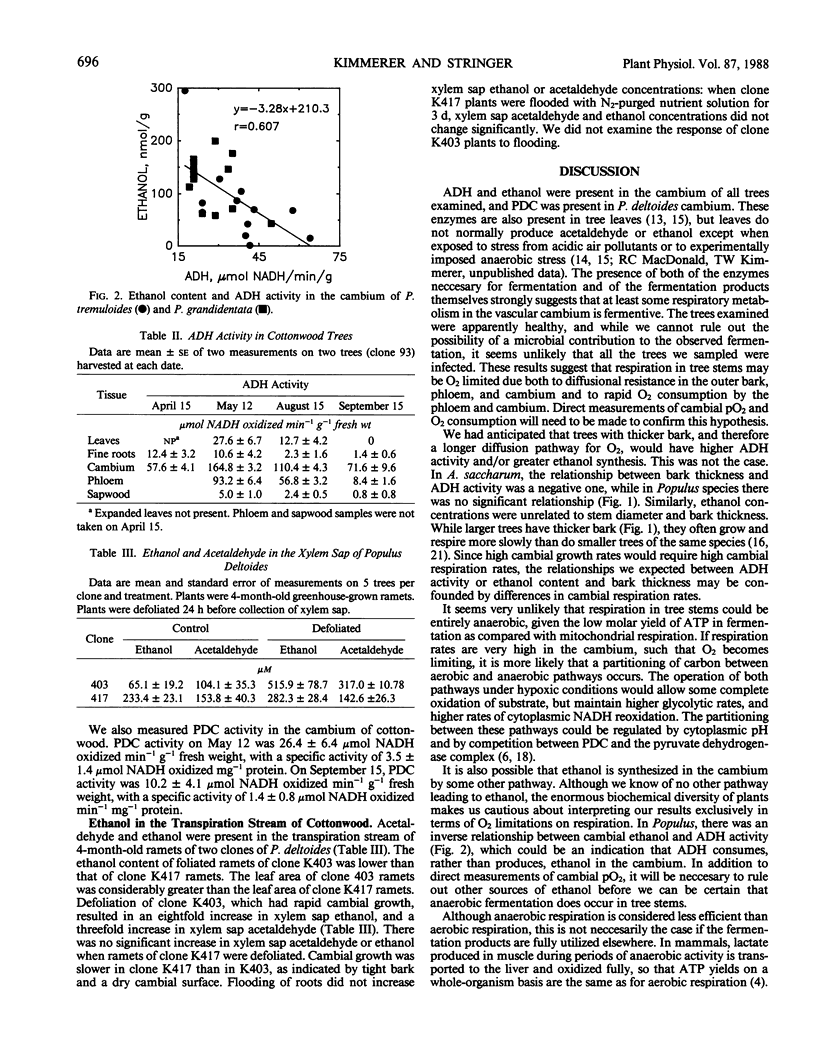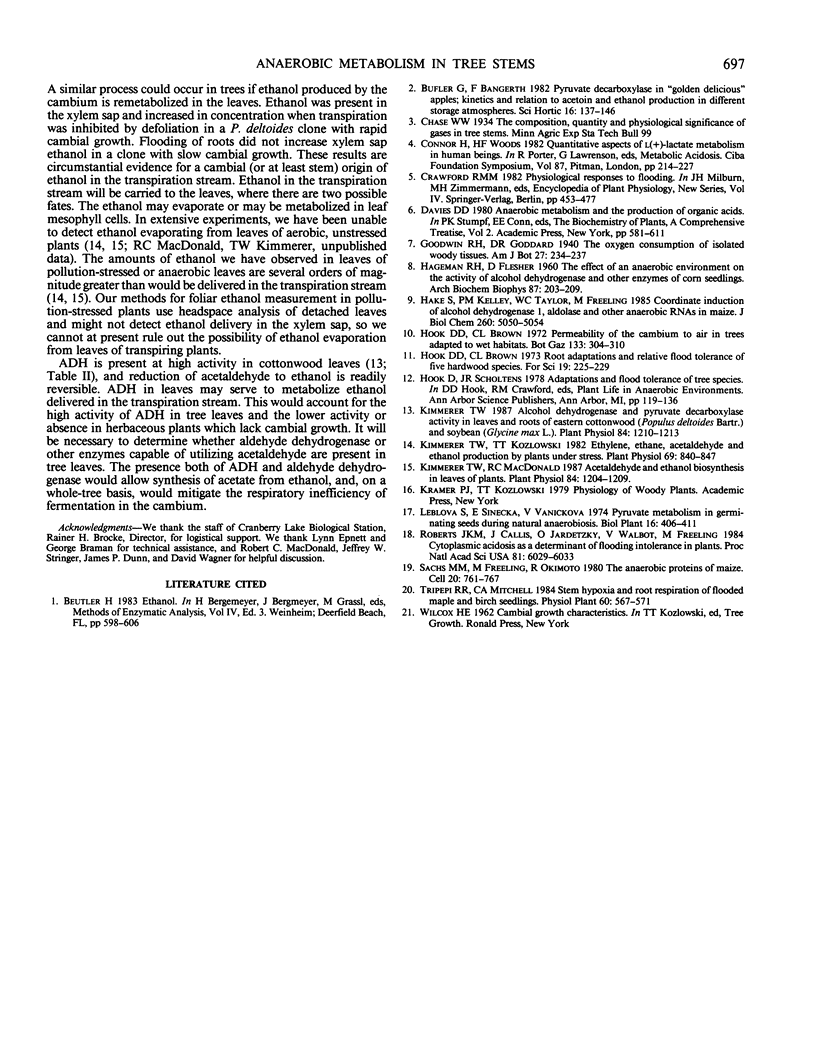Abstract
Anaerobic fermentation in plants is usually thought to be a transient phenomenon, brought about by environmental limitations to oxygen availability, or by structural constraints to oxygen transport. The vascular cambium of trees is separated from the air by the outer bark and secondary phloem, and we hypothesized that the cambium may experience sufficient hypoxia to induce anaerobic fermentation. We found high alcohol dehydrogenase activity in the cambium of several tree species. Mean activity of alcohol dehydrogenase in Populus deltoides was 165 micromoles NADH oxidized per minute per gram fresh weight in May. Pyruvate decarboxylase activity was also present in the cambium of P. deltoides, with mean activity of 26 micromoles NADH oxidized per minute per gram fresh weight in May. Lactate dehydrogenase activity was not present in any tree species we examined. Contrary to our expectation, alcohol dehydrogenase activity was inversely related to bark thickness in Acer saccharum and unrelated to bark thickness in two Populus species. Bark thickness may be less important in limiting oxygen availability to the cambium than is oxygen consumption by rapidly respiring phloem and cambium in actively growing trees. Ethanol was present in the vascular cambium of all species examined, with mean concentrations of 35 to 143 nanomoles per gram fresh weight, depending on species. Ethanol was also present in xylem sap and may have been released from the cambium into the transpiration stream. The presence in the cambium of the enzymes necessary for fermentation as well as the products of fermentation is evidence that respiration in the vascular cambium of trees may be oxygen-limited, but other biosynthetic origins of ethanol have not been ruled out.
Full text
PDF




Selected References
These references are in PubMed. This may not be the complete list of references from this article.
- Connor H., Woods H. F. Quantitative aspects of L(+)-lactate metabolism in human beings. Ciba Found Symp. 1982;87:214–234. doi: 10.1002/9780470720691.ch12. [DOI] [PubMed] [Google Scholar]
- HAGEMAN R. H., FLESHER D. The effect of an anaerobic environment on the activity of alcohol dehydrogenase and other enzymes of corn seedings. Arch Biochem Biophys. 1960 Apr;87:203–209. doi: 10.1016/0003-9861(60)90161-2. [DOI] [PubMed] [Google Scholar]
- Hake S., Kelley P. M., Taylor W. C., Freeling M. Coordinate induction of alcohol dehydrogenase 1, aldolase, and other anaerobic RNAs in maize. J Biol Chem. 1985 Apr 25;260(8):5050–5054. [PubMed] [Google Scholar]
- Kimmerer T. W. Alcohol Dehydrogenase and Pyruvate Decarboxylase Activity in Leaves and Roots of Eastern Cottonwood (Populus deltoides Bartr.) and Soybean (Glycine max L.). Plant Physiol. 1987 Aug;84(4):1210–1213. doi: 10.1104/pp.84.4.1210. [DOI] [PMC free article] [PubMed] [Google Scholar]
- Kimmerer T. W., Kozlowski T. T. Ethylene, Ethane, Acetaldehyde, and Ethanol Production By Plants under Stress. Plant Physiol. 1982 Apr;69(4):840–847. doi: 10.1104/pp.69.4.840. [DOI] [PMC free article] [PubMed] [Google Scholar]
- Kimmerer T. W., Macdonald R. C. Acetaldehyde and ethanol biosynthesis in leaves of plants. Plant Physiol. 1987 Aug;84(4):1204–1209. doi: 10.1104/pp.84.4.1204. [DOI] [PMC free article] [PubMed] [Google Scholar]
- Roberts J. K., Callis J., Jardetzky O., Walbot V., Freeling M. Cytoplasmic acidosis as a determinant of flooding intolerance in plants. Proc Natl Acad Sci U S A. 1984 Oct;81(19):6029–6033. doi: 10.1073/pnas.81.19.6029. [DOI] [PMC free article] [PubMed] [Google Scholar]
- Sachs M. M., Freeling M., Okimoto R. The anaerobic proteins of maize. Cell. 1980 Jul;20(3):761–767. doi: 10.1016/0092-8674(80)90322-0. [DOI] [PubMed] [Google Scholar]


